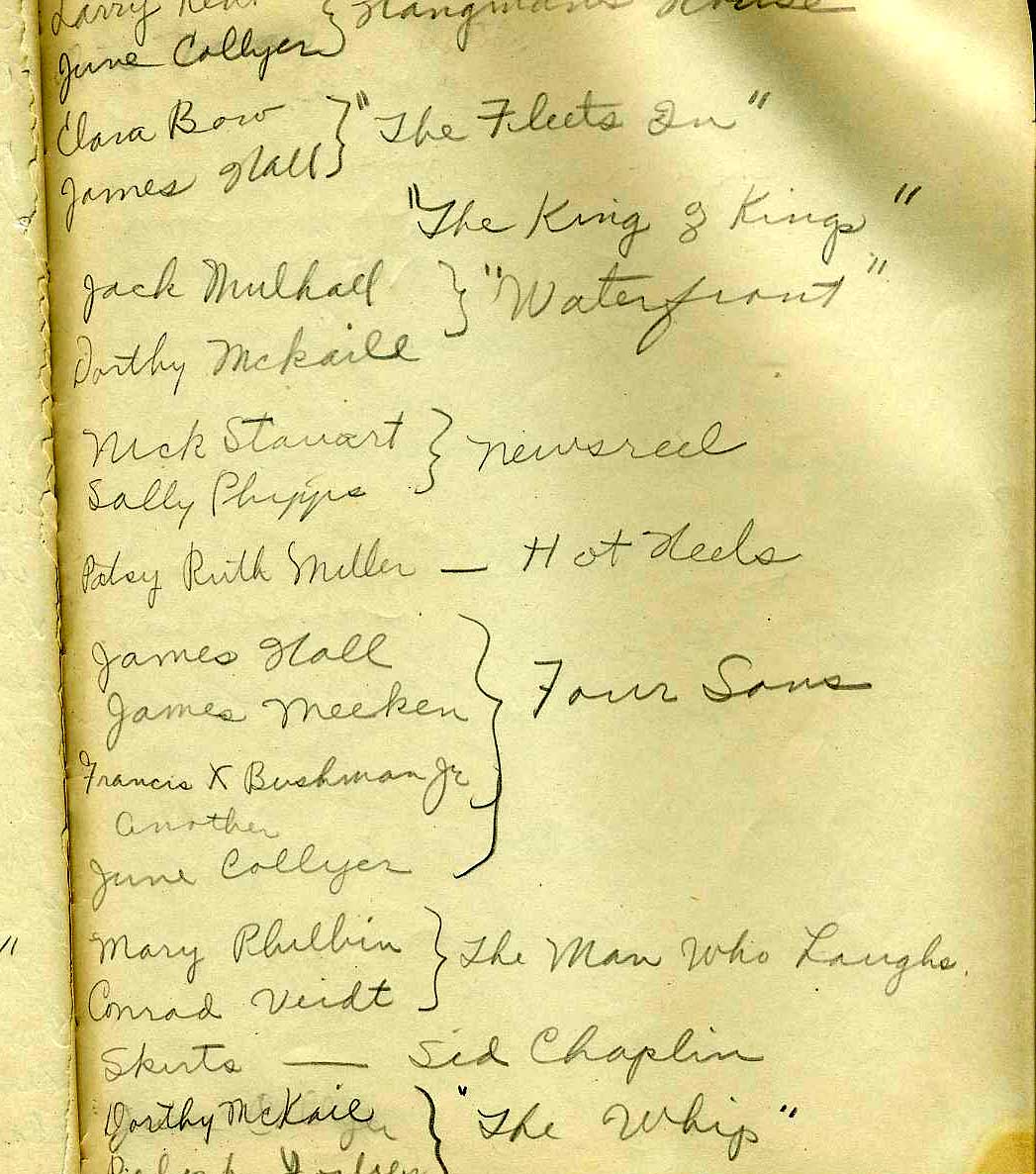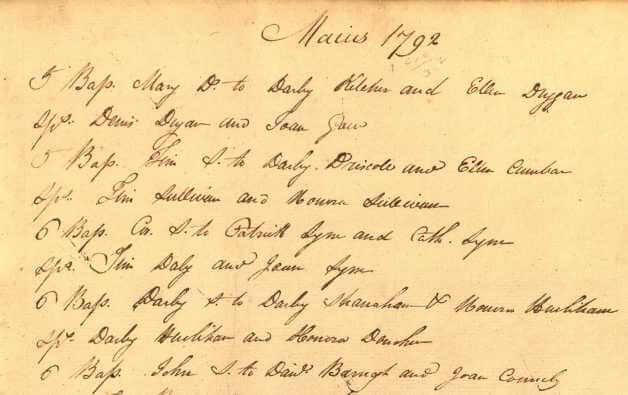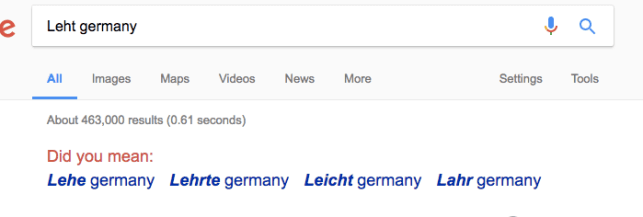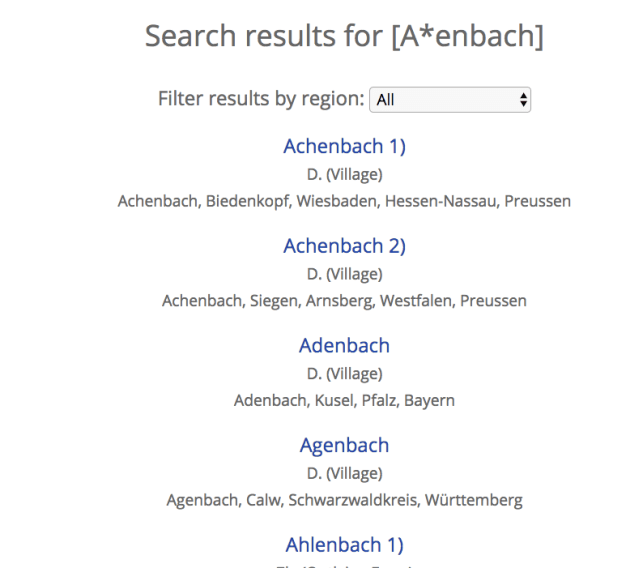Blog


New Irish genealogy records and more
New Irish genealogy records top this week’s list of noteworthy new family history collections online from around the globe. Also, find records for Austria, Brazil, France, Germany, Guatemala, Spain, Wales and the U.S. (FBI criminal files and collections for CO, ID, IL, KY, MA, TX, WV. All these collections come from the Genealogy Giants: Ancestry.com, FamilySearch.org, Findmypast.com and MyHeritage.com.
Featured: New Irish genealogy records online
The fabled luck of the Irish—or at least that of their descendants—continues throughout March, with significant new Irish genealogy records coming online. Subscription site Findmypast.com has updated its indexes of the Irish civil birth and marriage register images hosted online at IrishGenealogy.ie:
- The updated Irish Births Index consists of over 2.7 million indexed entries. “As well as listing the date and location of your ancestor’s birth, these new transcripts provide a variety of additional details including the names of both parents (including mother’s maiden name), father’s occupation and full dates of birth.”
- The updated Irish Civil Marriages now boasts over 2.6 million records. “These new transcripts…also provide a variety of additional details including the names of the couple’s parents, their fathers’ occupations, their residence and marital status.
Findmypast.com also posted more new Irish genealogy records:
- Antrim Histories & Reference Guides. Search George Benn’s authoritative work, A History of the Town of Belfast from the Earlier Times to the Close of the Eighteenth Century (1877). “It contains historic maps and illustrations as well as a chapter on noted inhabitants mentioned in seventeenth-century records including names such as Captain George Theaker, Arthur Chichester, Hugh Doak, Thoams Waring, George McCartney, and more.”
- Armagh Records & Registers. Browse 600 pages of Historical Memoirs of the City of Armagh (1819) to learn more about the history of Northern Ireland. “It contains biographical accounts of both Protestant and Roman Catholic archbishops, a narrative of important events, an account of the establishment of the Presbyterian congregations and the history of various customs and manners.”
- Church of Ireland Histories & Reference Guides. This collection has two PDF publications: The National Churches: The Church of Ireland (originally published in 1892) and Some Worthies of the Irish Church (published in 1900). Learn more about the history and practices of the Church of Ireland.
- Dublin Registers & Records. Over 2,000 records have been added to this collection of PDF images of “parish records (baptisms, marriages, and burials) from the Church of Ireland, census indexes, school registers, monumental inscriptions and printed histories. The records span from the 1600s up to 1800.”
- Irish Tontines Annuitants 1766-1789. “Over 153,000 annuity statements, accounts of deaths, death certificates, and marriage certificates relating to the subscribers and nominees of the Irish Tontine….The records in this collection have been released in association with the National Archives and cover the English tontine of 1789; the Irish tontines of 1773, 1775, and 1777; and the life annuities of 1766 to 1779.”
- Ireland, American Fenian Brotherhood 1864-1897. “Over 125,000 records from British Foreign Office correspondence regarding the American Fenian Brotherhood during the years from 1864 to 1897. Records include newspaper cuttings, letters, telegrams, lists of prisoners, and a number of photographs…. The collection includes accounts of the Brotherhood’s incursions into Canadian territory during the years 1866 to 1871.” Subscribers may also browse American Fenian Brotherhood records from 15,000 volumes of British Foreign Office papers.
- Royal Irish Constabulary History and Directories. This collection has been updated. It contains “an assortment of pay records, lists, directories, commendation records, treasury books, Constabulary Code books and training manuals.”
Ancestry.com has updated a few of its own Irish genealogy records collections (original data for the Irish Catholic registers comes from Celtic Catholic Registers, digitized images):
- Ireland, Select Catholic Birth and Baptism Registers, 1763-1917;
- Ireland, Select Catholic Confirmation Registers, 1775-1923;
- Ireland, Select Catholic Marriage Registers, 1775-1942;
- Ireland, Select Catholic Death and Burial Registers, 1767-1992;
- UK and Ireland, Obituary Index, 2004-2017;
- and, though not specifically an Irish collection, this updated database is expected to include plenty of Irish ancestors: Massachusetts, Boston Archdiocese Catholic Sacramental Records, 1789-1900.
More new genealogy collections worldwide
Austria. Nearly 34,000 indexed records are part of a new free collection at FamilySearch, Austria, Carinthia, Gurk Diocese, Catholic Church Records, 1527-1986. According to the site, this is a “collection of church books containing births, marriages, and deaths held at the Diocese of Gurk in Klagenfurt, Austria.”
Brazil. More than 100,000 records have been added to an existing free FamilySearch collection, Brazil, Santa Catarina, Catholic Church Records, 1714-1977. Also recently updated is its collection of Brazil, São Paulo, Immigration Cards, 1902-1980.
France. FamilySearch has added two new free census collections for France: upwards of 150,000 indexed names in France, Hautes-Alpes, Census, 1856 and over 66,000 names in France, Hautes-Alpes, Census, 1876. According to the collection descriptions, these are complete listings of the census for Hautes-Alpes in these years.
Germany. About 10,000 records each have been added to existing FamilySearch collections, Germany, Prussia, Brandenburg and Posen, Church Book Duplicates, 1794-1874 and Germany, Schleswig-Holstein, Kreis Steinburg, Civil Registration, 1874-1983.
Guatemala. Over 687,000 names have been added to the free FamilySearch collection, Guatemala Civil Registration, 1877-2008. According to the site, documents report “births, marriages, deaths, indexes and other records created by civil registration offices in Guatemala. Some of these records have been indexed and are searchable as part of this collection. Additional indexed records will be published as they become available.”
Spain. Over 22,000 names have been added to the free FamilySearch collection, Spain, Diocese of Cartagena, Catholic Church Records, 1503-1969. “These records include: baptisms, confirmations, pre-marriage investigations, marriages, deaths, indexes, testaments, and parish financial and land records. Some of these records have been indexed and are searchable as part of this collection. Additional indexed records will be published as they become available.”
United States. Subscription giant Ancestry.com has posted a new collection of F.B.I. Deceased Criminal Identification Files, 1971-1994. According to the site, “This database contains details about deceased individuals extracted from criminal identification files from 1971-1994….Details vary widely by form, but details in this index may include the following: name, birthplace, birth date, gender, race, death date, eye color, hair color, height, and weight.”
Various U.S. state-level collections include:
- Colorado. Ancestry.com has published a new collection, Colorado, Roman Catholic Diocese of Colorado Springs Sacramental Records, 1800-1967.
- Idaho. More than 650,000 names have been added to a free FamilySearch collection, Idaho, Southern Counties Obituaries, 1943-2013.
- Illinois. Nearly 2,000 records have been added to the free FamilySearch collection, Illinois, Cook County Deaths, 1878-1994.
- Subscribers of MyHeritage.com can explore a new collection, Kentucky Newspapers, 1848-2009. The collection includes nearly 1.4 million digitized newspaper pages. Among papers included are the Kentucky New Era, Middlesboro Daily News, Daily News, Harlan Daily Enterprise, Park City Daily News, Grayson County News-Gazette, and The Covington Journal.
- New at Ancestry.com is Massachusetts, Compiled Birth, Marriage, and Death Records, 1700-1850, which “consists of birth, marriage, and death records from the state of Massachusetts that took place between the years of 1700 and 1850.”
- Texas. Over 10,000 names appear in a brand new FamilySearch collection, Texas, El Paso Alien Arrivals, 1909-1924.
- West Virginia. MyHeritage.com subscribers also have access to a new collection of West Virginia Newspapers, 1930-2009. The collection currently has just over 370,000 digitized pages from papers such as Williamson Daily News, Point Pleasant Register, Spirit of Jefferson Farmer’s Advocate, The St. Mary’s Oracle, Grant County Press, The Glenville Democrat, and The Times Record.
Wales. Subscription site Findmypast.com has added over 43,000 new records to its collection of Monmouthshire Electoral Registers. According to the site, “The new additions consist of handwritten Gwent registers spanning the years 1832 to 1849 that will allow you to discover where your Welsh ancestor lived and the type of property they owned or rented. The early handwritten registers (1832-1839) are presented as images and transcripts and the later printed registers are presented as portable device formats (PDFs). The format of each register can vary depending on the constituency or the year of the register but most will reveal a combination of your ancestor’s abode, property type, property location, property name, year, constituency and district.”
Learn more about the Genealogy Giants
I keep my eye on the Genealogy Giants for you! All four, Ancestry.com, FamilySearch.org, Findmypast.com and MyHeritage, boast billions of historical records that can help you find your family history at home and abroad. But learning about each can be overwhelming! Click here for an introduction to these sites: what they have in common and what sets each apart. You’ll want to know so you can get the most out of them!
Disclosure: This article contains affiliate links and Genealogy Gems will be compensated if you make a purchase after clicking on these links (at no additional cost to you). Thank you for supporting Genealogy Gems!

About the Author: Sunny Morton
Sunny is a Contributing Editor at Lisa Louise Cooke’s Genealogy Gems; her voice is often heard on the Genealogy Gems Podcast and Premium Podcasts. She’s known for her expertise on the world’s biggest family history websites (she’s the author of Genealogy Giants: Comparing the 4 Major Websites); writing personal and family histories (she also wrote Story of My Life: A Workbook for Preserving Your Legacy); and sharing her favorite reads for the Genealogy Gems Book Club.

Deciphering Place Names Just Got Easier
Thanks to guest blogger Katherine Schober, expert German translator and author of the new book, Tips and Tricks of Deciphering German Handwriting, for this article on deciphering place names (or anything else) in hard-to-read old documents.
There are times when you know from the context of an old document that a certain handwritten word is a city or town–but you aren’t sure of the exact letters the scribe has written. Perhaps you can make out most of the name, but not the first letter. Or maybe you can’t tell whether you’re looking at an “r” or an “n” in the middle of the word. Other times, you can read the place name, but this particular spelling doesn’t appear on a map.
Deciphering place names with a simple trick—and 2 free online tools
Two online resources that are very helpful for identifying town names are Google’s search engine and Meyer’s Gazetteer. At both sites, you can enter what you do know and have these sites help suggest possible place names.
Google search suggestions
Type your transcribed town name into Google—along with any other known place clues, such as the county/province or country name–and see if you get any search results for the region you are researching. If you do, congratulations, you likely transcribed it correctly!
If not, Google may actually suggest the correct transcription of your word for you. For example, when I was translating a nineteenth-century document a few months ago, I read the letters of the town as “L-e-h-t”. I typed “Leht, Germany” into Google, and waited to see what search results would appear. As it turned out, there were no search results for “Leht, Germany,” but Google’s “Did you mean…” function actually provided four other possibilities for what I could have meant as a town name! Here’s what it gave me:
(Learn hundreds more tips on using Google search–and all the other free Google tools–in Lisa Louise Cooke’s popular book, The Genealogist’s Google Toolbox.)
More help from Meyer’s Gazetteer
If you can only recognize the first few or the final few letters of a German town, Meyer’s Gazetteer is the site for you. Meyer’s Gazetteer is a free database containing names and information on pre-World War I German cities, towns, and villages (meaning that this site includes towns in present-day France, Poland, and other places). Type in the letters you recognize in your word and use an asterisk to represent the letters you don’t. Meyer’s Gazetteer will then provide you with a list of all places with your letter combination. Then you can then see if there is a town that matches your handwritten word and region.
In the example below, I recognized a capital “A” at the beginning of the word. The middle letters looked like a scribble, but I could see “e-n-b-a-c-h” as the final letters of the word. I typed this into Meyer’s Gazetteer, using an asterisk for those unclear middle letters. The website then provided me with a list of possibilities, and–by only looking at the town names in my specific German region–I was able to significantly narrow down what my handwritten town name could be. By comparing this list to my handwritten word, I was able to then decipher the remaining letters and figure out the name of the town. (Click here for more tips on using Meyer’s Gazetteer.)
By taking advantage of the resources available online, you can make your transcription process much easier and much more fun. Best of luck!
About the Author
Katherine Schober is a German translator who specializes in genealogy documents. Her new book, Tips and Tricks of Deciphering German Handwriting, is available in paperback or Kindle format. She also has a terrific German Handwriting Course here.
Check out Katherine’s other Genealogy Gems guest blog posts:

Genealogy Gems Podcast Episode 215
 The Genealogy Gems Podcast
The Genealogy Gems Podcast
Episode #215
with Lisa Louise Cooke
Click to listen to this new episode!

In this “Blast from the Past” episode, Lisa gives voice to the era of silent films, in a unique approach to understanding her great-grandmother’s life. Her passion for this mostly-forgotten film genre comes through in her conversation with film archivist Sam Gill of the Niles Essanay Silent Film Museum in Fremont, California.
Don’t miss these fun segments, too:
A listener writes in after discovering a birth mom’s story in passport records (see what lengths he goes to in order to access the records!).
Just after RootsTech 2018, Your DNA Guide Diahan Southard reports on the latest DNA news you’ll want to know.
NEWS: ROOTSTECH 2018 DNA NEWS ROUNDUP FROM YOUR DNA GUIDE DIAHAN SOUTHARD
First up was MyHeritage, showing their support for the 7 million adopted individuals in the United States with their new DNA Quest campaign. MyHeritage will provide 15,000 DNA test kits to eligible participants free of charge, in order to help these adoptees use DNA to reunite them with their biological families. With this initiative they “hope to make this project a shining light for corporate philanthropy and an example to be followed by other commercial companies in their own lines of expertise to make the world a better place.” MyHeritage has assembled an advisory board of genetic genealogists and genetic counselors to help drive this project and ensure it meets the needs of the community. If you or someone you know is interested in participating, you can head on over to the DNA Quest website (www.dnaquest.com) to fill out an application. But you better hurry, the application deadline is April 30, 2018.
Next, addressing the biggest problem in genetic genealogy, namely the looming What Next? question facing millions of newly swabbed participants, MyHeritage announced the Big Tree ? a giant network of genetic and genealogy results that will automate much of the match comparison and tree searching to replace your head-scratching with light-bulb moments. They have already made significant headway on this project, as reported in the journal Science, which MyHeritage’s own chief scientific officer Yaniv Erlich collaborated on. The journal reports that the team of scientists successfully extracted public family trees from Geni.com (a MyHeritage daughter company), and then used a computer program to clean up and link the trees together. It sounds like MyHeritage will be adding genetic data to this kind of tree data in their Big Tree project.
MyHeritage isn’t the only company out to improve the DNA matching experience. UK based LivingDNA announced that they plan to add DNA matching to their popular origins test by third quarter 2018. When they launched in October of 2016, LivingDNA was not offering cousin matching, but opted instead to focus all of their resources on providing very detailed origins reports, including breaking down the UK in to 46 categories. In the months since their launch, they have been working on a genetic matching system, called Family Networks, that will appeal to a wide range of users and will “reduce the risk of human error and take away the tedious task of figuring out how each person on a user’s list are related to one another.” They are promising an experience that provides “a level of relationship prediction and specificity beyond anything currently on the market.”
So it sounds like if you are currently struggling with turning your DNA matches into genealogical discoveries, our testing companies want you to know you are not alone, and they are working hard to provide solutions to these problems. Time will only tell if they can succeed.
Diahan also provides answers to questions asked about this blog post announcing updates to MyHeritage DNA matching technology and its new chromosome browser.
MAILBOX: TOM’S PASSPORT SEARCH SUCCESS

Kathleen Head’s passport applications
U.S. passport applications on Ancestry and FamilySearch through 1925
National Archives article on passport applications
U.S. State Department passport application (since 1925) copy requests
Frequently asked Questions about the Freedom of Information Act
BONUS CONTENT for Genealogy Gems App Users
If you’re listening through the Genealogy Gems app, your bonus content for this episode is a marvelous soundtrack of silent film music, played live (you’ll hear audience laughter occasionally in the background) and supplied by Sam Gill at the Niles Essanay Silent Film Museum. The Genealogy Gems app is FREE in Google Play and is only $2.99 for Windows, iPhone and iPad users.
GEM: INTRODUCTION TO SILENT FILMS

(Image above: a page from Lisa’s grandmother’s journal)
Genealogy Gems Podcast Episode #2 about transcribing family journals and letters was remastered in Episode #134.
Episode #8
Stanford Theatre, Palo Alto, CA (shows silent films)
Internet Movie Database (IMDB)
Niles Essanay Silent Film Museum: the website for this museum is packed with resources: links to Chaplin-Keaton-Lloyd film locations; the International Buster Keaton Society; Classic Images Magazine; a timeline and early history of film and more.
Films mentioned in this episode:

Diary of a Lost Girl starring Louise Brooks (watch trailer)
Safety Last starring Harold Lloyd (watch here)
The Mender of Nets with Mary Pickford (watch here)
The Blot directed by Lois Weber (watch here)
Don’t Park There with Will Rogers (watch here)
Flivvering by Victor Moore
Wife and Auto Trouble directed by Bill Henderson (watch here)
A Trip Down Market Street (watch here)
Wings (watch here)
All Quiet on the Western Front (watch here)
Destruction of San Francisco by Blackhawk Films (watch part here)
Four Sons (watch trailer)
INTERVIEW: SAM GILL, FILM HISTORIAN AND ARCHIVIST
Shown here: Sam Gill and Lisa Cooke at the Niles Essanay Silent Film Museum on the day of this interview. Throughout their conversation, you hear the sounds of excited theater patrons filling the auditorium before a screening.
Sam Gill’s interest in silent film dates to 1966, when as a college student he traveled to Hollywood to interview his aging heroes from the silent screen comedy era. For more than 20 years, he was Archivist of the Academy of Motion Picture Arts and Science’s Margaret Herrick Library, where he established the Academy’s Special Collections and helped it grow to its current status as the preeminent repository for the study of American cinema. He is currently a Board Member of the Niles Essanay Silent Film Museum. Over the years, he has consulted on or otherwise contributed his expertise to numerous film festivals, museum film programs and film history books.
Sam recently sent us these delightful photos (below) of himself over the years:
- (Image 1) 1966: His first trip to Hollywood
- (Image 2) 1974: A news article about a research trip to Florida
- (Image 3) 2017: A birthday party for Diana Serra Cary (Baby Peggy), the last surviving star of the silent screen, held at the Edison Theater of the Niles Essanay Silent Film Museum; also shown is Rena Kiehn, the museum’s publicity director and store manager



San Francisco Silent Film Festival
How to identify old cars in photographs (a technique that adapts well to film!)
National Film Preservation Foundation (click here to see where to find films they have helped preserve, including Japanese internment camp footage)

Start creating fabulous, irresistible videos about your family history with Animoto.com. You don’t need special video-editing skills: just drag and drop your photos and videos, pick a layout and music, add a little text and voila! You’ve got an awesome video! Try this out for yourself at Animoto.com.
MyHeritage.com is the place to make connections with relatives overseas, particularly with those who may still live in your ancestral homeland. Click here to see what MyHeritage can do for you: it’s free to get started.
GEM: HOW TO FIND SILENT FILMS
If you’re looking for a specific movie, start with a Google search with the name in quotations (and, if you like, anything else you know about it, such as an actor or director’s name or the year). You may find lots of results, including a Wikipedia page and film history write-ups, but if you want to WATCH it, limit your search results to Video.
You can also turn to free curated collections online, such as:
101 free silent films: the great classics (links to free film footage on YouTube, Internet Archive, etc.)
YouTube playlist of silent movies
Internet Archive Silent Films collection: feature and short silent films uploaded by Internet Archive users
Silentmovies.info: watch several classic silent films
Netflix.com: Netflix subscribers can access the service’s little-known collection of silent films by entering the Netflix link for browsing its film categories and then the category specific to silent films, 53310:
http://www.netflix.com/browse/genre/ 53310
(Click here to read an article about this tip, along with Netflix’ full list of specific film categories.)
YouTube: watch for free, rent or buy, as shown here:

More places to explore for silent films:
Turner Classic Movies (TCM.com): under TCMDb, click Database Home and search for a title you want to watch
Amazon.com: Search for titles in the Video section; or search the Classic Silent films category
Your local public library (search catalog: try searching for an actor’s name as author)
Ebay: May be the right place to purchase a hard-to-find title. Click here to view current results for a search on silent films, filtered to include only movie/film items.
PRODUCTION CREDITS
Lisa Louise Cooke, Host and Producer
Sunny Morton, Editor
Diahan Southard, Your DNA Guide, Content Contributor
Hannah Fullerton, Production Assistant
Lacey Cooke, Service Manager
Disclosure: This document contains affiliate links and Genealogy Gems will be compensated if you make a purchase after clicking on these links (at no additional cost to you). Thank you for supporting this free podcast and blog!
FREE NEWSLETTER:
















